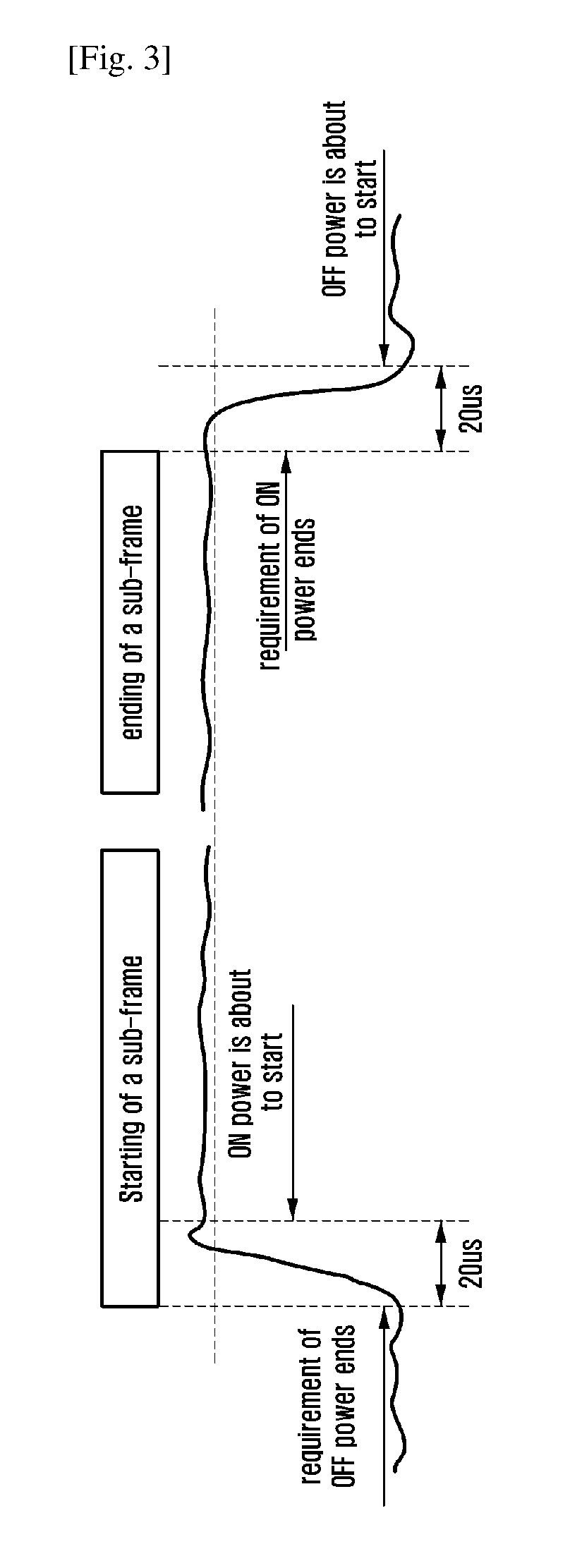Method and device for transmitting uplink information
a technology of uplink information and transmission method, which is applied in the direction of wireless network protocols, power management, wireless communication, etc., can solve the problems of power adjustment of devices that need a transition time and the need for transmission power of devices, so as to reduce the probability of collisions between devices
- Summary
- Abstract
- Description
- Claims
- Application Information
AI Technical Summary
Benefits of technology
Problems solved by technology
Method used
Image
Examples
first example
A First Example
[0087]On one carrier of an unlicensed band, an allocation granularity of an uplink PUSCH channel of the UE is one interlace. One interlace contains multiple PRBs, and these PRBs are dispersed on the whole band. For example, FIG. 2 shows that it is assumed that one interlace includes 10 PRBs which are distributed at equal intervals on the whole band of 20 MHz. The uplink PUSCH of the UE needs to meet the requirements of a maximum transmission power in one aspect and needs to meet the limitation of the PSD in the other aspect. The PUSCH resource allocation structure based on interlaces may be adopted relaying on a definition method of the frequency granularity of the PSD. When the frequency granularity is large, for example, 1 MHz, the allowed maximum transmission power of the UE may be increased. For example, it is assumed that the frequency granularity of the PSD is 1 MHz and the limitation of the PSD is 10 dBm / MHz, the transmission power on one PRB of one interlace m...
second example
A Second Example
[0103]Due to limitations of the device, the transition time during power adjusting of the device always exists in actual working environments. And the transition time includes a power increase transition time and a power decrease transition time. In the existing LTE systems, positions of the power increase transition time of different types of signals relative to a sub-frame / OFDM signal are different. That is, for a PUSCH, the power increase transition time of the UE is 20 us after the start time of the uplink transmission scheduled by the base station; for a PRACH and an SRS, the power increase transition time of the UE is 20 us before the start time of the PRACH and the SRS. According to the 3GPP RAN4 specifications, there are no requirements on the instantaneous value of the transmission power of the device in the transition time. However the transmission power of the device is required to reach a required value after the transition time.
[0104]On a carrier of an u...
third example
A Third Example
[0117]Due to limitations of the device, a transition time of power adjusting of the device during actual working process is needed. The transition time may include a power increase transition time and a power decrease transition time. In the existing LTE systems, for a PUSCH, a PRACH and an SRS, the power decrease transition time of the UE is 20 us after the ending of corresponding uplink transmission. According to the 3GPP RAN4 specification, there are no requirements on the instantaneous value of the transmission power of the device in the transition time, but the transmission power of the device needs to reach a required value after the transition time.
[0118]On a carrier of an unlicensed band, the UE contends for a channel by executing LBT, and starts uplink transmission after completing LBT successfully. The above LBT may be CAT2 or CAT4. In addition, the LBT may also be NO LBT. For the power decrease transition time, the transmission power of the UE needs to be d...
PUM
 Login to View More
Login to View More Abstract
Description
Claims
Application Information
 Login to View More
Login to View More - R&D
- Intellectual Property
- Life Sciences
- Materials
- Tech Scout
- Unparalleled Data Quality
- Higher Quality Content
- 60% Fewer Hallucinations
Browse by: Latest US Patents, China's latest patents, Technical Efficacy Thesaurus, Application Domain, Technology Topic, Popular Technical Reports.
© 2025 PatSnap. All rights reserved.Legal|Privacy policy|Modern Slavery Act Transparency Statement|Sitemap|About US| Contact US: help@patsnap.com



